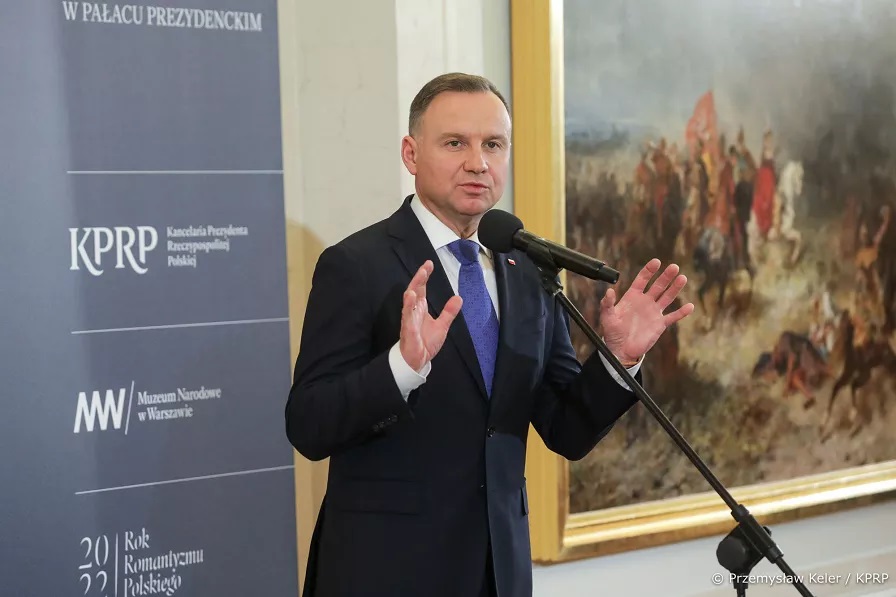President Andrzej Duda and his wife opened at the Presidential Palace the exhibition “Romanticism. Polish painting of the 19th century”. The president states that Romanticism depicts the Polish soul, so paintings from this period will look very good in a place that is visited by many foreign guests.
“This is an exhibition about Poland and, in a sense, about our soul, presenting paintings of this specific epoch for Poles”, assessed Andrzej Duda.
The president recalled that this was a period of struggle for independence and recovery of the lost Polish state. He stressed that Romanticism was in a special way inscribed in the aspirations of the Poles of that time, shaped the Polish spirit of that era and was part of our national characteristics.
“This exhibition shows in a nutshell a fragment of the great influence of Romanticism. We and our guests will be able to stop before these great works and look at important moments of Polish history”, said Andrzej Duda.
The exhibition is part of the celebration of the Year of Polish Romanticism, established by the Sejm in 2022. It features works by leading painters of Polish Romanticism and artists who referred to its achievements – including Marcin Zaleski, Wincenty Kasprzycki, Jan Matejko, Artur Grottger, Antoni Blank and Jozef Simmler.
Amid the works on display, originating from the collections of the National Museum in Warsaw, many refer to the most important moments of Polish history, including the triumphs of the Republic, episodes of national uprisings and Polish martyrdom. The organizers pay special attention to Jan Matejko’s sketch for the 1884 painting Wernyhora, this legendary Ukrainian bard said to foretell the reconciliation of the Polish and Ukrainian nations.
Simultaneously with the exhibition, there was the opening of the Grand Hall of the Presidential Palace, known as the White Eagle Hall, where the history of the Polish emblem is presented.
Arkadiusz Slomczynski





